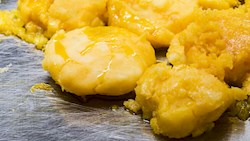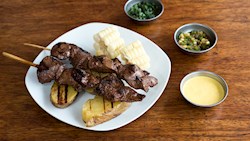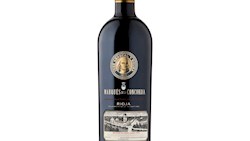Best South American Foods
Vori-vori (bori-bori) is a hearty Paraguayan soup filled with meat (usually beef or chicken), fluffy dumplings consisting of cornmeal and cheese, and vegetables such as carrots, celery, and onions. The soup is traditionally flavored with bay leaves, cloves, and parsley, while saffron gives it a rich golden color.
Vori-vori is especially popular during the cold winter months, although it is sometimes also consumed during the summer. It is recommended to serve vori-vori warm, sprinkled with parsley and accompanied by grated parmesan cheese on the side. The soup is very rich in nutrients, and there are many varieties such as the one with the addition of grilled chicken pieces.
MAIN INGREDIENTS
Picanha is a fresh cut of beef that's especially popular and highly prized in Brazil. In the US, it's called sirloin cap, and in the UK, it's known as the rump cap. Picanha is situated on the back side of the animal, above the butt, where it sits on a fat cap.
It's mostly used for churrasco – the meat is first grilled, then sliced off of a skewer. This cut holds very little fat in the meat, so it must be cooked perfectly in order not to make it tough. In Brazil, every churrasco has picanha, and all of the best churrascarias feature picanha on their menus.
OTHER VARIATIONS OF Churrasco
MOST ICONIC Picanha
View moreMAIN INGREDIENTS
Aji criollo or salsa de aji is a spicy Peruvian salsa prepared with a combination of yellow aji chili peppers and oil. The sauce is usually pleasantly spicy, but it can also be extremely hot and spicy, so one should be careful when tasting it for the first time.
The sauce is traditionally used as an accompaniment to various meat and fish dishes, but it's also often used as a dip for french fries and tequeños. Although it shares the name with an Ecuadorian sauce, those two differ significantly, both in appearance (Ecuadorian version is green), and in the method of preparation and ingredients used.
MAIN INGREDIENTS
Pan de bono is a traditional bread consisting of cassava starch, cornmeal or corn flour, queso fresco, eggs, and sugar. The bread is shaped into bagels or balls that are slightly larger than golf balls. Pan de bono is similar to other South American cheese breads like pan de queso, difference being added conr flour or cornmeal, and a hint of sweeteness due to the addition of sugar.
It is usually served warm with a cup of hot chocolate on the side. Some claim that the name pan de bono was created after an Italian baker in Cali who used to yell pane del buono (good bread), while others say that it is named after a place called Hacienda El Bono, where it was first made.
MAIN INGREDIENTS
Guasacaca is Venezuela's version of guacamole, although it is not as thick. This simple combination of avocado, coriander, parsley, bell peppers, onions, garlic, salt, oil, and vinegar is typically consumed with barbecued meats such as beef, chicken, sausages, and morcillas.
It is used as a dip with fried plantain and yuca, but it can also be drizzled on empanadas. The sauce is usually made in a blender, resulting in a creamy sauce, while some prefer the mashed version, resulting in a chunkier sauce.
MAIN INGREDIENTS
Salsa de rocoto is a hot Peruvian sauce or dip that's a staple at most tables in the country. It is prepared with fiery red rocoto peppers, oil, and lime juice, with the occasional addition of parsley, cilantro, or milk. Due to the fact that this salsa is so popular in the country, there are numerous variations, ranging from medium hot to insanely hot, so be careful when trying it for the first time.
Use the salsa with a variety of fish and meat dishes, potatoes, or try it in sandwiches.
Bife de chorizo is an Argentinian beef cut equivalent to the US New York strip steak, strip steak, sirloin, and top loin traditionally used for asado. It is a thick, juicy steak with a sizable layer of fat on top. It comes in several varieties, namely the bife de chorizo angosto (thin sirloin) and the bife de chorizo mariposa (butterflied sirloin).
And if you want to judge the quality of someone’s barbecue or the quality of a barbecue place, ask for this steak. Also, if you get one with more than a generous amount of fat, know you've been served a cheap and bad-quality one.
OTHER VARIATIONS OF Asado
Dulce de leche is a type of condensed milk sweet from Argentina and Uruguay. Traditionally, it is made by heating sweetened cow's milk until it caramelizes and achieves a thick consistency, enough to act as a spread, a filling for cakes and pies, or an ice cream topping.
The legend says that dulce de leche originated in Buenos Aires in 1829, when a maid of Argentinian leader Juan Manuel de Rosas was preparing la lechada by heating sugar and milk. As she left it on the fire a bit longer than usual, she noticed it had become a dark brown substance, and that's how dulce de leche was born.
MAIN INGREDIENTS
Pollo a la brasa is a popular Peruvian dish consisting of crunchy and juicy charcoal-grilled chicken that is traditionally served with French fries and salads. Today, it is one of the most consumed meals in Peru, so much that 27 million Peruvians eat it daily.
The dish was first invented in Lima in the 1950s, when it was seasoned only with salt, but nowadays the chicken is often marinated in a special combination of ingredients, usually consisting of vinegar, salt, pepper, rosemary, chili, and dark beer.
MOST ICONIC Pollo a la brasa
View moreMAIN INGREDIENTS
Literally translated to cheese bread, pão de queijo has its origins in the culinary inventions of African slaves, when they started to use the residue of the cassava plant. A fine white powder, or starch, was rolled into balls and baked.
At the time, no cheese was added, so it was just baked starch, but at the end of the 19th century, when slavery ended, other foods started to become available to the Afro-Brazilians for the first time. In the state of Minas Gerais, the dairy center of Brazil, cheese and milk started to be added to the starchy balls, and pão de queijo was created.
MOST ICONIC Pão de queijo
View moreBest South American Food Producers
Café Granja La Esperanza is a leading specialty coffee producer from Colombia, renowned for its commitment to quality, innovative fermentation methods, and cultivation of rare varieties. Founded in 1945, the farm began its journey in the Valle del Cauca region with Yellow Bourbon, Red Bourbon, and Caturra varieties before expanding to estates such as Las Margaritas, La Esperanza, Cerro Azul, Potosí, and Hawaii.
Their continuous research and refinement of cultivation and processing techniques have made them synonymous with premium coffee and precision fermentation. In 2007, they gained global recognition by growing the Geisha variety in Panama, which won first place at the prestigious Best of Panama competition.
BEST Café Granja La Esperanza Coffees
Daterra Coffee – Innovation and Sustainability in Specialty Coffee Daterra Coffee is a leading Brazilian coffee plantation renowned for its innovative and sustainable practices in specialty coffee cultivation. Located in the Cerrado region, Daterra was founded in the 1980s with the mission of redefining coffee production through environmentally responsible methods.
Their farms, situated in Patrocínio, are among the oldest coffee plantations in Brazil’s Cerrado, positioned at an average altitude of over 900 meters, with some areas reaching 1,200 meters. Daterra was the first coffee farm in the world to package its green coffee in sealed vacuum packs, preserving the delicate flavor nuances throughout long overseas journeys.
BEST Daterra Coffee Coffees
Located in the heart of Chapada de Minas, Fazenda Primavera is synonymous with the production of premium Arabica coffee. Thanks to this specific geographical location, the farm cultivates Arabica varieties in a dry region, with plantations spread across flat plateaus with gentle slopes, typical of this area.
The microclimate, characterized by periods of humidity and drought, creates ideal conditions for growing high-quality coffee. At Fazenda Primavera, special attention is given to sustainable coffee cultivation. The farm has implemented techniques that minimize the environmental impact of production, and as part of long-term projects, coffee is grown alongside African mahogany, creating a unique product – Mahogany Coffee.
BEST Fazenda Primavera Coffee Beans
Las Dinas is a renowned Argentine producer of cured meats and cheeses, known for its exceptional quality and dedication to preserving traditional production methods. Based in Tandil, a region famous for its artisanal charcuterie, Dinas Salumeria has built a strong reputation by selecting the finest ingredients and expertly crafting meats to deliver rich and balanced flavors.
Their product range includes premium bondiolas, hams, cured pork loins, salamis, and longanizas, as well as a variety of cheeses—ranging from hard and semi-hard to fresh and creamy options. In addition, they offer exclusive gourmet platters and gift sets, perfect for those who appreciate fine culinary experiences.
BEST Las Dinas Meat Products
Olivicola Laur is an olive oil producer based in Mendoza, Argentina. The company has been in operation since 1889, making it one of the oldest olive oil producers in the country. They focus on producing high-quality extra virgin olive oil using traditional methods combined with modern technology.
Laur cultivates several varieties of olives, including Arauco and Arbequina, on their estates. Their olive oils have received multiple awards in both national and international competitions.
AWARDS

EVO IOOC - Gold Medal
2023, 2022, 2021, 2020, 2018, 2016

London IOOC - Gold
2023, 2022, 2021

ATHENA IOOC - Gold
2023, 2022, 2021, 2020
BEST Olivicola Laur Olive Oils
ALMAZARAS DE LA SUBBÉTICA SL is an olive oil producer based in Córdoba, Spain. The company is located in the heart of the Subbética Natural Park, a region known for its ideal olive-growing conditions. They specialize in producing high-quality extra virgin olive oil, including the widely acclaimed brands "Parqueoliva" and "Rincón de la Subbética." The cooperative behind the company was founded in 2007, resulting from the merger of two smaller cooperatives.
They focus on traditional farming techniques combined with modern production methods.
AWARDS

ATHENA IOOC - Double Gold
2024, 2023, 2022, 2020, 2018, 2017
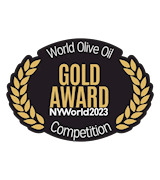
NYIOOC - Gold
2023

Olive Japan - Gold
2023, 2022, 2021, 2020, 2019, 2018, 2017, 2016, 2015, 2014, 2013
BEST Almazaras De La Subbética Olive Oils
Establecimiento Olivum is an olive oil producer located in San Juan, Argentina. The company specializes in the production of high-quality olive oil. It is known for its modern extraction and processing techniques aimed at maintaining the purity and flavor of the oil.
The region of San Juan provides favorable conditions for olive cultivation, contributing to the quality of their products.
AWARDS

Olive Japan - Gold
2023, 2021

EVO IOOC - Gold Medal
2023, 2021, 2019, 2018

London IOOC - Gold
2023, 2022
BEST Establecimiento Olivum Olive Oils
Prosperato is an olive oil producer located in Rio Grande do Sul, Brazil. They focus on producing high-quality, extra virgin olive oil. The region's climate and soil conditions are favorable for olive cultivation, contributing to the distinctive flavor profiles of their oils.
The company emphasizes sustainable practices and innovation in their production processes.
AWARDS

ATHENA IOOC - Double Gold
2024, 2021

ATHENA IOOC - Gold
2024, 2023, 2022, 2021, 2020, 2018

NYIOOC - Gold
2023
BEST Prosperato Olive Oils
Solfrut is an olive oil producer based in San Juan, Argentina. The company specializes in producing both traditional and organic extra virgin olive oils. It is part of the Phrónesis Group, which also has operations in other agricultural sectors such as fruit and nut production.
Solfrut utilizes modern agricultural practices and advanced technology to ensure high-quality production.
AWARDS

EVO IOOC - Gold Medal
2023, 2019, 2017, 2016

London IOOC - Gold
2023

Olive Japan - Gold
2022
BEST Solfrut Olive Oils
Agrícola Pobeña, also known under the brand Aceites Alonso, is a Chilean company specializing in the production and export of premium olive oils. Located in Ñuñoa, Santiago, the company is recognized for its commitment to quality and traditional methods.
Its products are internationally acclaimed for their rich flavor and high standards, representing the best of Chilean olive oil craftsmanship.
AWARDS

NYIOOC - Gold
2023

ATHENA IOOC - Gold
2023, 2022

Olive Japan - Gold
2022, 2017, 2016
BEST Agrícola Pobeña Olive Oils
Best South American Food Products
AWARDS

ATHENA IOOC - Double Gold
2020

NYIOOC - Gold
2023

EVO IOOC - Gold Medal
2023, 2022, 2021, 2020, 2019, 2018
Gran Laur - Olivicola Laur is a premium olive oil brand from Mendoza, Argentina, produced by Olivicola Laur. Known for its high-quality extra virgin olive oils, Gran Laur showcases a refined taste, created with meticulous care from handpicked olives.
The brand emphasizes sustainable farming practices, ensuring that each bottle delivers rich flavors with a smooth, balanced finish. Ideal for gourmet kitchens, Gran Laur offers a taste of Argentina’s rich olive-growing heritage.
AWARDS

EVO IOOC - Gold Medal
2023, 2020, 2016

London IOOC - Gold
2023, 2022
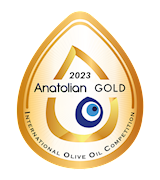
Anatolian IOOC - Gold
2023
PARQUEOLIVA SERIE ORO DOP PRIEGO DE CORDOBA is an extra virgin olive oil produced by ALMAZARAS DE LA SUBBÉTICA SL. This premium olive oil is characterized by its vibrant green color with golden reflections. It is sourced from the Priego de Córdoba region, which is renowned for its high-quality olive oils that reflect the unique terroir of the area.
This product boasts a distinguished balance of fruity, bitter, and pungent flavors, making it ideal for enhancing a variety of dishes.
AWARDS

EVO IOOC - Gold Medal
2023, 2022, 2021, 2020, 2018
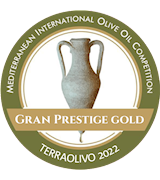
Terraolivo IOOC - Grand Prestige Gold
2022, 2021, 2018, 2014

Olive Japan - Gold
2021, 2020, 2019, 2018
AWARDS

ATHENA IOOC - Double Gold
2021

ATHENA IOOC - Gold
2023, 2022

Olive Japan - Gold
2022, 2021, 2020, 2018
Laur Cruz De Piedra is a premium extra virgin olive oil produced by Olivicola Laur in the renowned Cruz de Piedra region of Mendoza, Argentina. This olive oil is crafted from carefully selected olives, offering a rich, smooth taste with subtle fruity notes and a mild peppery finish.
Known for its high quality, Laur Cruz De Piedra is perfect for enhancing a variety of dishes, from salads to grilled vegetables, and is valued for its freshness and balanced flavor. The oil reflects the unique terroir of the Cruz de Piedra region, where the high-altitude climate contributes to the distinct characteristics of the olives.
AWARDS

Terraolivo IOOC - Grand Prestige Gold
2022

ATHENA IOOC - Gold
2022

EVO IOOC - Gold Medal
2020, 2018
Alonso Coratina is a premium extra virgin olive oil produced by Agrícola Pobeña under the Alonso brand in Chile. Made exclusively from the Coratina olive variety, this oil is renowned for its robust flavor, featuring intense fruitiness, a peppery finish, and a balanced bitterness.
Perfect for enhancing grilled meats, fresh salads, and hearty dishes, it reflects the high quality and dedication to excellence of its producer.
AWARDS

NYIOOC - Gold
2023

ATHENA IOOC - Gold
2023, 2022

Olive Japan - Gold
2022, 2017, 2016
Laur Altos Limpios is a premium extra virgin olive oil from Argentina, produced by Olivicola Laur. This olive oil is made from handpicked olives grown in the high-altitude regions of Mendoza, offering a unique flavor profile shaped by the pure, clean air and the specific climate conditions of the area.
Known for its smooth texture and vibrant green color, Laur Altos Limpios delivers a well-balanced taste with notes of fresh grass, almonds, and a mild peppery finish. The oil is ideal for drizzling over salads, vegetables, and fresh bread, bringing a touch of Argentina’s finest olive oil to every dish.
AWARDS

EVO IOOC - Gold Medal
2023, 2020

ATHENA IOOC - Gold
2023, 2021

Terraolivo IOOC - Grand Prestige Gold
2022, 2021, 2018, 2014
El Mistol Premium is a high-quality extra virgin olive oil produced by Agropecuaria El Mistol, located in the San Juan province of Argentina. This premium olive oil is crafted from hand-picked olives, grown in the region's ideal climate for olive cultivation.
Known for its smooth texture, intense aroma, and rich flavor profile, El Mistol Premium has received recognition in international olive oil competitions, highlighting its exceptional quality. The oil is made using advanced production techniques, ensuring the preservation of the olives' natural flavors.
AWARDS

NYIOOC - Gold
2023

EVO IOOC - Gold Medal
2023, 2021, 2016
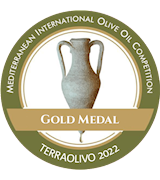
Terraolivo IOOC - Gold Medal
2022, 2015
AWARDS

NYIOOC - Gold
2023

EVO IOOC - Gold Medal
2022, 2021, 2018

Terraolivo IOOC - Grand Prestige Gold
2022, 2021, 2019, 2018
Establecimiento Olivum - Blend Medio is a premium extra virgin olive oil crafted from a blend of Coratina, Picual, and Arbequina olives. This oil combines the bold, peppery flavor of Coratina, the fruity and balanced profile of Picual, and the mild sweetness of Arbequina.
The result is a well-rounded, aromatic olive oil with complexity, ideal for a variety of culinary uses, from dressings to cooking.
AWARDS

Anatolian IOOC - Gold
2023

London IOOC - Gold
2022

Terraolivo IOOC - Grand Prestige Gold
2022, 2021
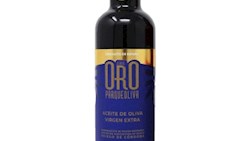

TasteAtlas food rankings are based on the ratings of the TasteAtlas audience, with a series of mechanisms that recognize real users and that ignore bot, nationalist or local patriotic ratings, and give additional value to the ratings of users that the system recognizes as knowledgeable. For the “Top 100 South American Foods” list until March 27, 2025, 47,818 ratings were recorded, of which 23,121 were recognized by the system as legitimate. TasteAtlas Rankings should not be seen as the final global conclusion about food. Their purpose is to promote excellent local foods, instill pride in traditional dishes, and arouse curiosity about dishes you haven’t tried.


















